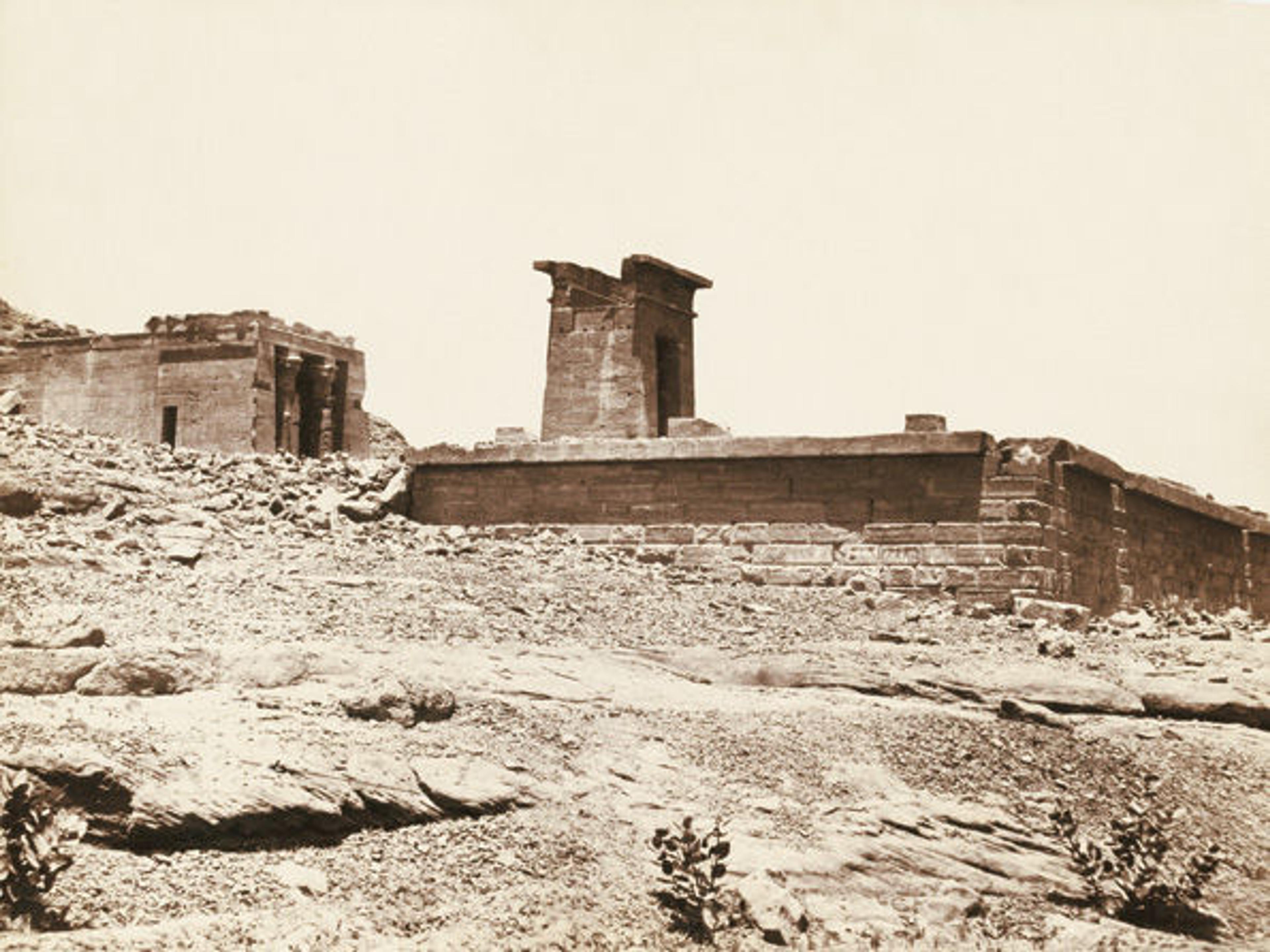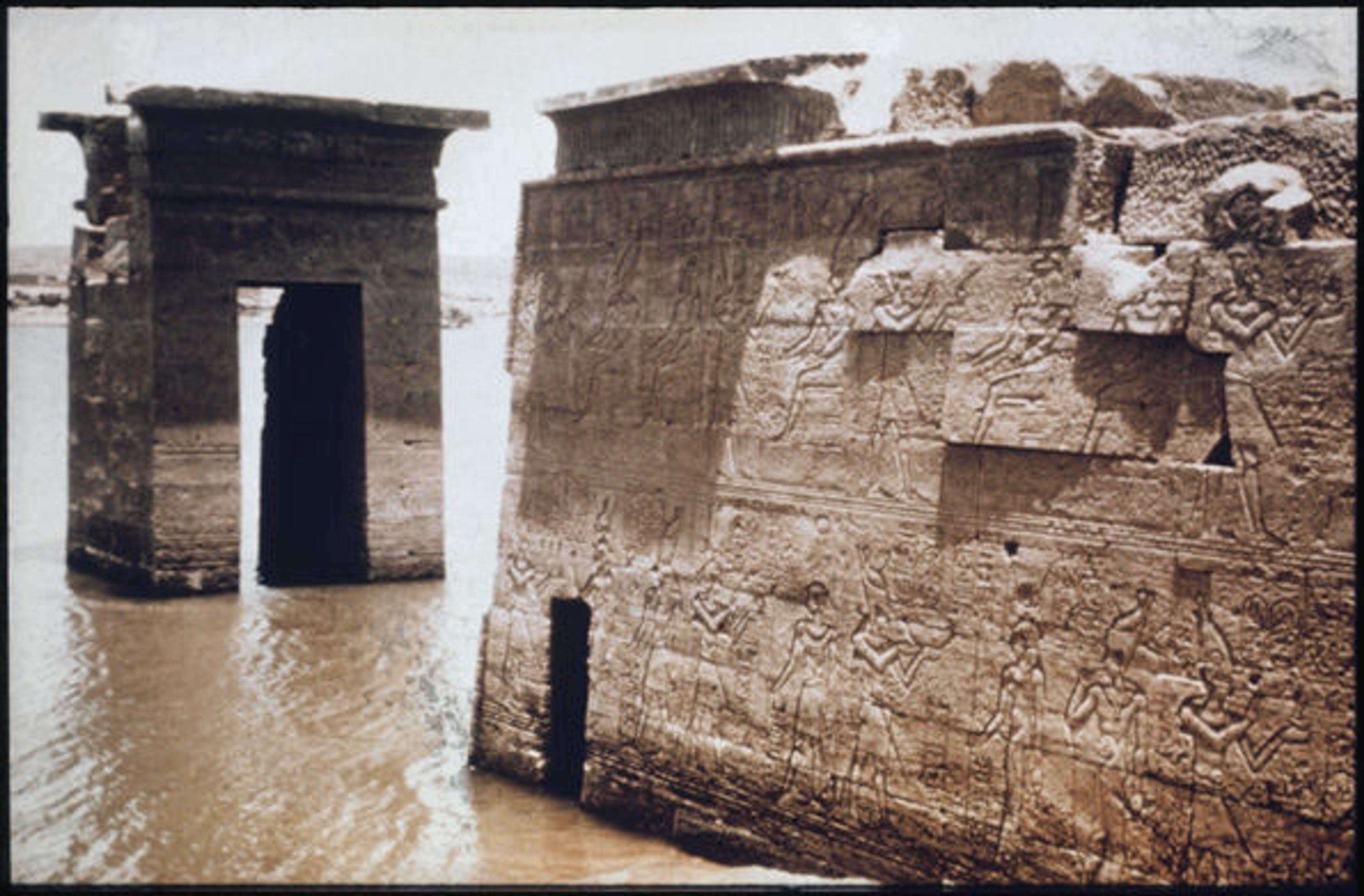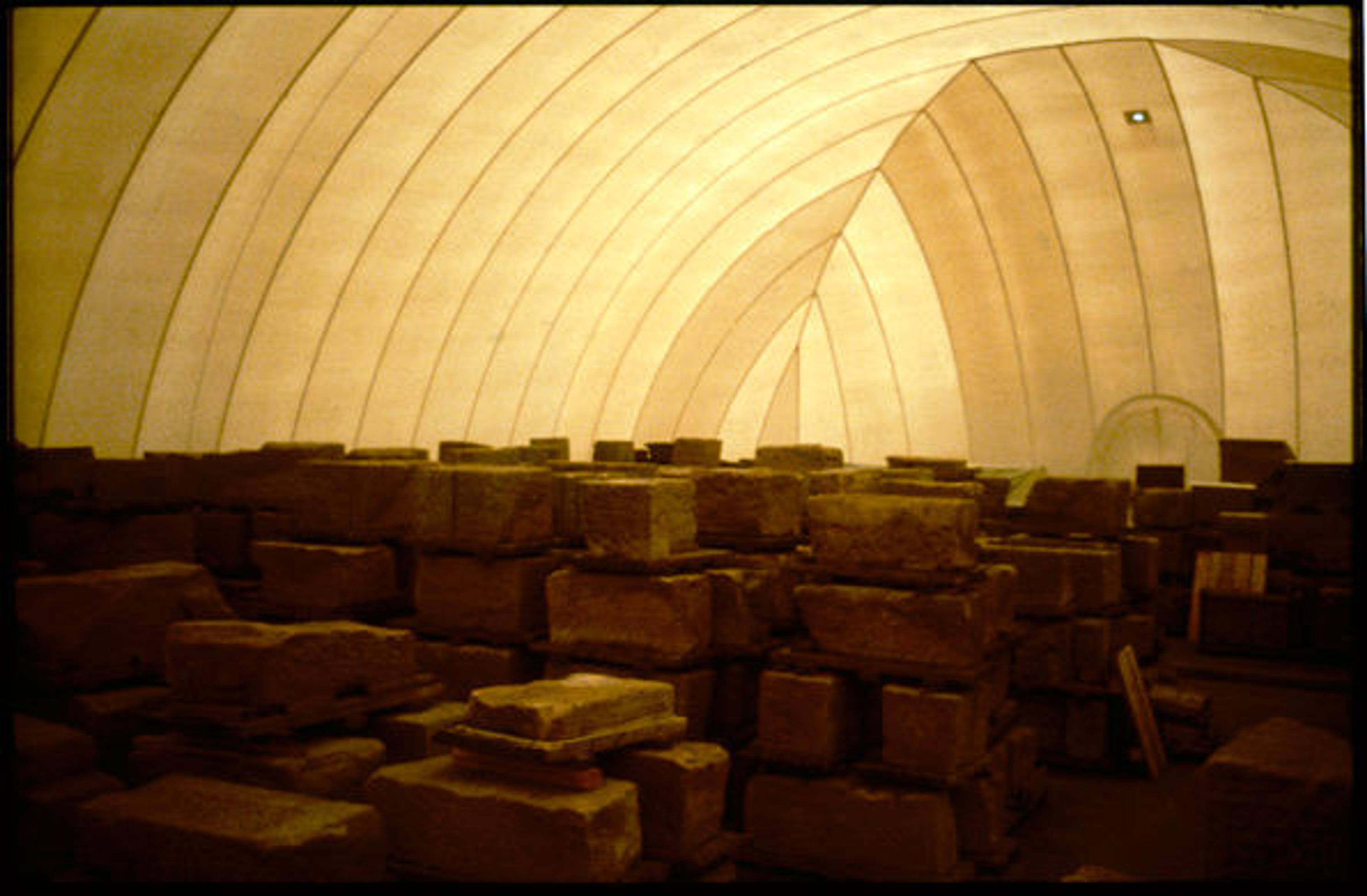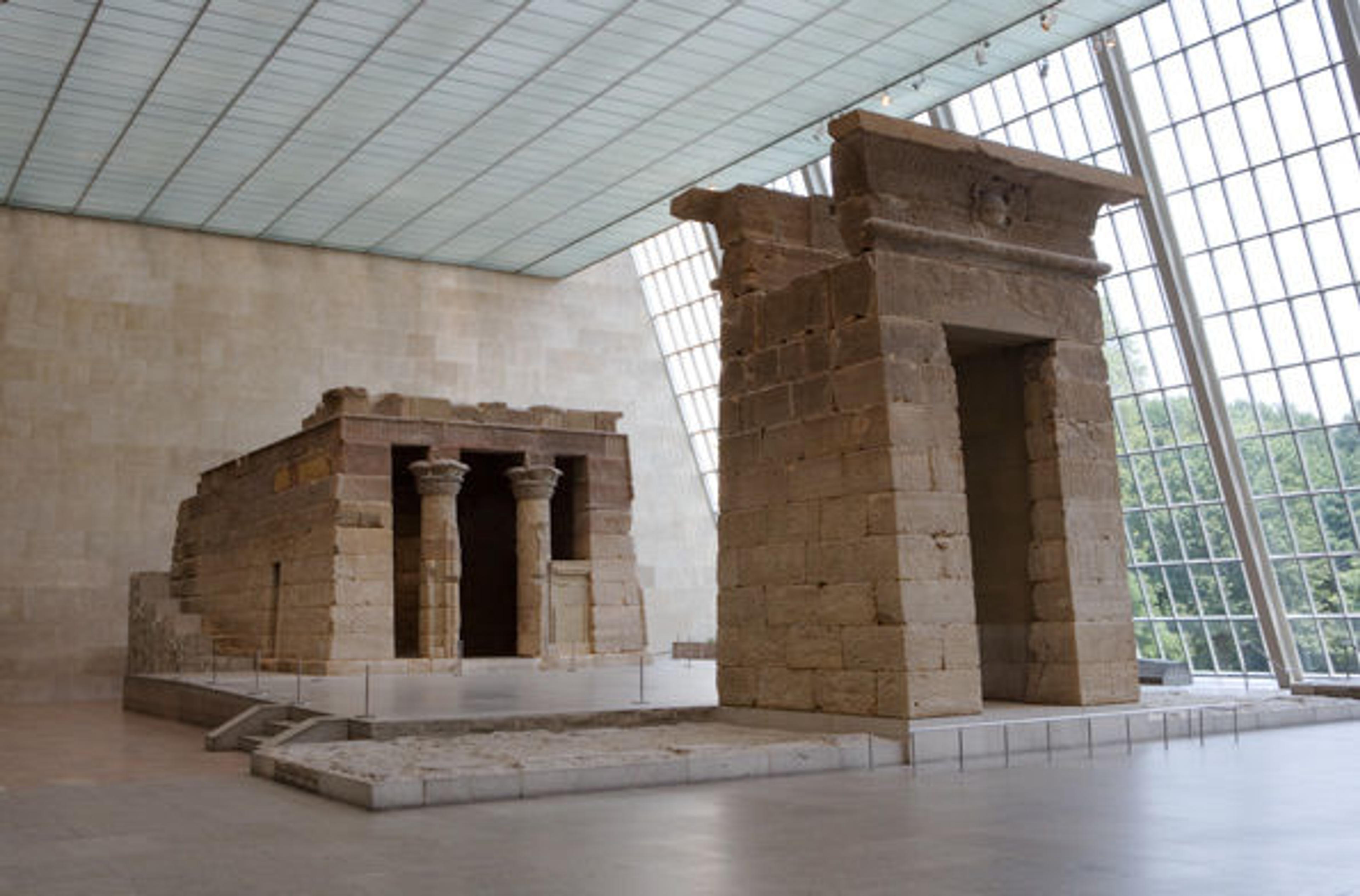I Was Here I Was I to Channel The Temple of Dendur's History

The Temple of Dendur in situ. Photographed by Antonio Beato ca. 1865–1885. ©The Metropolitan Museum of Art
«When Kate Soper's adventurous score for I Was Here I Was I fills The Temple of Dendur in The Sackler Wing on June 20, the gallery itself will be at the center of the performance. The Temple of Dendur has long been an unrivaled venue for concerts, but for this dramatic and unprecedented finale to Alarm Will Sound's yearlong residency, the Temple will be the principal character in a story that spans two millennia and three different storylines.»
A commission of ambitious proportions, I Was Here I Was I is an opera in three acts that uses both music and spoken text to extract individual experiences with The Temple of Dendur that range from Ancient Nubia to present-day New York City. The performers, led by Kate Soper, Matt Marks, Mike Parker Harley, Courtney Orlando, and Caleb Burhans, will move throughout the space in a brilliant staging by director and librettist Nigel Maister.
The opera's story weaves through the Temple's own timeline, animating an artifact two thousand years old and providing narrative to the breathtaking space over time: A nineteenth-century woman sails down the Nile, discovering beauty and brutality in equal measure; two Nubian brothers drown in the river, setting in motion a chain of events that will see their Temple saved from a similar fate millennia later; and a twenty-first-century tourist confronts the Temple on Fifth Avenue and has a soul-shaking transformation. Generations seek to control memory and secure their places in history throughout this story, which is inspired in part by the writings of Victorian adventurer Amelia Edwards.
In this new work, Kate Soper—a 2012 Guggenheim Fellowship recipient—has created music that moves swiftly between song and word, requiring singers with razor-sharp precision. However, it is Soper's ability (and her emerging signature) to compose music with enchanting melodies that float alongside boundary-pushing vocal techniques. Her musical dialect has been hailed for its dynamism as well as its lyricism, and through the unmatched abilities of the virtuosic ensemble Alarm Will Sound, will come to life in one of the Met's most popular and beloved galleries to take on its singular history.
The Temple of Dendur—built between 22–10 b.c. in Nubia, on the west bank of the Nile River, fifty miles South of Aswan—was given to the United States by Egypt in 1965 and installed in the Museum's Sackler Wing in 1978. The Temple itself maintains a significant relationship with the Nile: not only does it stand as a monument dedicated to two brothers who drowned, but a destructive, man-made lake was the impetus behind its eventual relocation.

The Temple of Dendur in situ; exterior, north side, including gateway, toward east; partly flooded. Photographed ca. 1959. ©The Metropolitan Museum of Art
The building of the High Dam at Aswan in the 1950s, which would allow for more crops year-round, also created a vast lake of about three thousand square miles in the region, subsequently flooding Nubia and its ancient artifacts. At that time, a committee was formed to seek the relocation and reassembly of as many Nubian monuments as possible. The Temple of Dendur was disassembled in 1963 by the Egyptian Antiquities Service, and the sandstone blocks were carefully dismantled using a complex numbering system instituted to detail the exact location and formation of the structure's components.
In 1965, the United Arab Republic offered the Temple to the United States, and a freighter loaded with the priceless sandstone blocks docked at Pier 10 at Hamilton Avenue in Brooklyn in 1968.
On board, in the lower hold, beneath Italian cheeses, canned tomatoes, and jars of maraschino cherries, was the Temple of Dendur. Packed in over 640 crates and weighing over 800 tons, the blocks from the temple that formerly stood on the banks of the Nile were on the way to their final destination (Cyril Aldred, "The Temple of Dendur," The Metropolitan Museum of Art Bulletin, Vol. 36, No. 1, Summer 1978).
Now in the care of the Met's curators in the Department of Egyptian Art, the Temple blocks were stored in the South Parking Lot in enormous, inflated structures made of canvas and vinyl, where the blocks remained until 1974. They were then moved to the north end of the Museum and construction began in a temperature- and humidity-controlled environment—a gallery that would not only prevent deterioration but also allow The Temple of Dendur to be visible from inside as well as outside the Museum. With the construction of the gallery well underway, restoration and repair of the blocks began in late 1974, when they were brought up to the platform for careful reassembly.

The sandstone blocks of The Temple of Dendur, before reassembly, in a plastic "bubble" on the Museum's South Parking Lot. Photographed early 1970s

Construction of The Temple of Dendur, Third Phase, MMA Storage; blocks in North Parking Garage. ©The Metropolitan Museum of Art

Construction of The Temple of Dendur, Fourth Phase, MMA Installation; general view, south and east sides, with materials and scaffolding in foreground. ©The Metropolitan Museum of Art
The Temple of Dendur's gravitational force endures: an ancient landmark with a majestic aura amid the urban hustle. By exploring human encounters with the Temple throughout its fascinating history, I Was Here I Was I inspires new connections with one of the Met's most beloved artifacts—transporting audiences well beyond the site-specific performance experience.

The Temple of Dendur, ca. 15 b.c. Egyptian, Nubia, Dendur. Aeolian Sandstone; Dimensions: L. from gate to rear of temple 24 m 60 cm (82 ft.). The Metropolitan Museum of Art, New York, Given to the United States by Egypt in 1965, awarded to The Metropolitan Museum of Art in 1967, and installed in The Sackler Wing in 1978 (68.154)
I Was Here I Was I will premiere on Friday, June 20, at 7:00 p.m. To purchase tickets, visit www.metmuseum.org/tickets; call 212-570-3949; or stop by the Great Hall Box Office, open Monday–Saturday, 11:00 a.m.–3:30 p.m.
Meryl Cates
Meryl Cates is a senior publicist in the Communications Department.